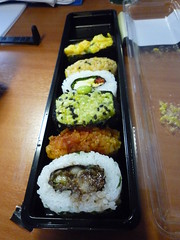 There is a small Japanese restaurant in my area that used to have crowds upon crowds waiting outside its doors for the inexpensive, but most exquisite sushi and Japanese fare. If you asked any full-time resident, they would all say, “it’s the best sushi in Palm Beach County, and the price is right.” Now there’s still a respectable crowd, but even on a busy Saturday night in this tropical paradise, no one lingers around the outside waiting for hours to sample the menu. What happened?
There is a small Japanese restaurant in my area that used to have crowds upon crowds waiting outside its doors for the inexpensive, but most exquisite sushi and Japanese fare. If you asked any full-time resident, they would all say, “it’s the best sushi in Palm Beach County, and the price is right.” Now there’s still a respectable crowd, but even on a busy Saturday night in this tropical paradise, no one lingers around the outside waiting for hours to sample the menu. What happened?
It’s called the customer experience, and it angered so many people and the word eventually got around. The experiences closely resembled the 1995 Seinfeld sitcom about the Soup Nazi; the name was used as an exaggeration of the excessively strict rules he had for his patrons if they wanted to purchase the delicious soups he offered at his small establishment. In reality, that particular episode was modeled after New York soup vendor Al Yeganeh. When a customer didn’t follow the dictated regimentation, the store owner would say, “No soup for you! Next.”
Not quite as regimented as the Seinfeld episode, but most probably equally as annoying was the Japanese restaurant’s owner and front person who would refuse to seat any party unless all were standing in front of her. Even if the party was dropped off and the driver was parking the car, the hostess considered it an “incomplete” party and therefore placed the patrons at the end of the line. Those were the days when the wait to be seated could have been over an hour. And it wasn’t isolated incidents; there were never exceptions, nor were there ever any allowances for loyal customers who consistently were there on time.
We all used to wonder how any business could succeed. Even though the practice infuriated people, they would still go, but I think the competition and the initial customer experience has now made a significant impact on their business.
There’s nothing new about focusing on customer experience, after all isn’t that what differentiates success? Humans connect emotions with the rational delivery abilities of a business, and after a while, customers, no matter how good the sushi might be, will most likely move on to the competition. Poor customer experiences disappoint us, and good customer experiences create those “raves” that in turn inspire more business.
I’m not happy that the Japanese restaurant has lost a lot of its business, but it does prove the point how profit is not sustainable without designing the “great customer” experience. We need to listen to our customers, listen to our employees, sweat the details, and adapt and adopt.
photo credit: Ambernectar 13



